Fusion OS AidLux
Quick Start
First Launch
After the application is installed and launched for the first time, the software will configure the Linux environment. This process takes approximately 1–3 minutes, depending on the network environment and hardware performance. Once completed, you can access the AidLux main interface.
As shown below, open the AidLux App on Android and click Start.

Remote Access to AidLux
To log in to the AidLux system, please refer to AidLux System Login
Examples
Open the desktop examples application.
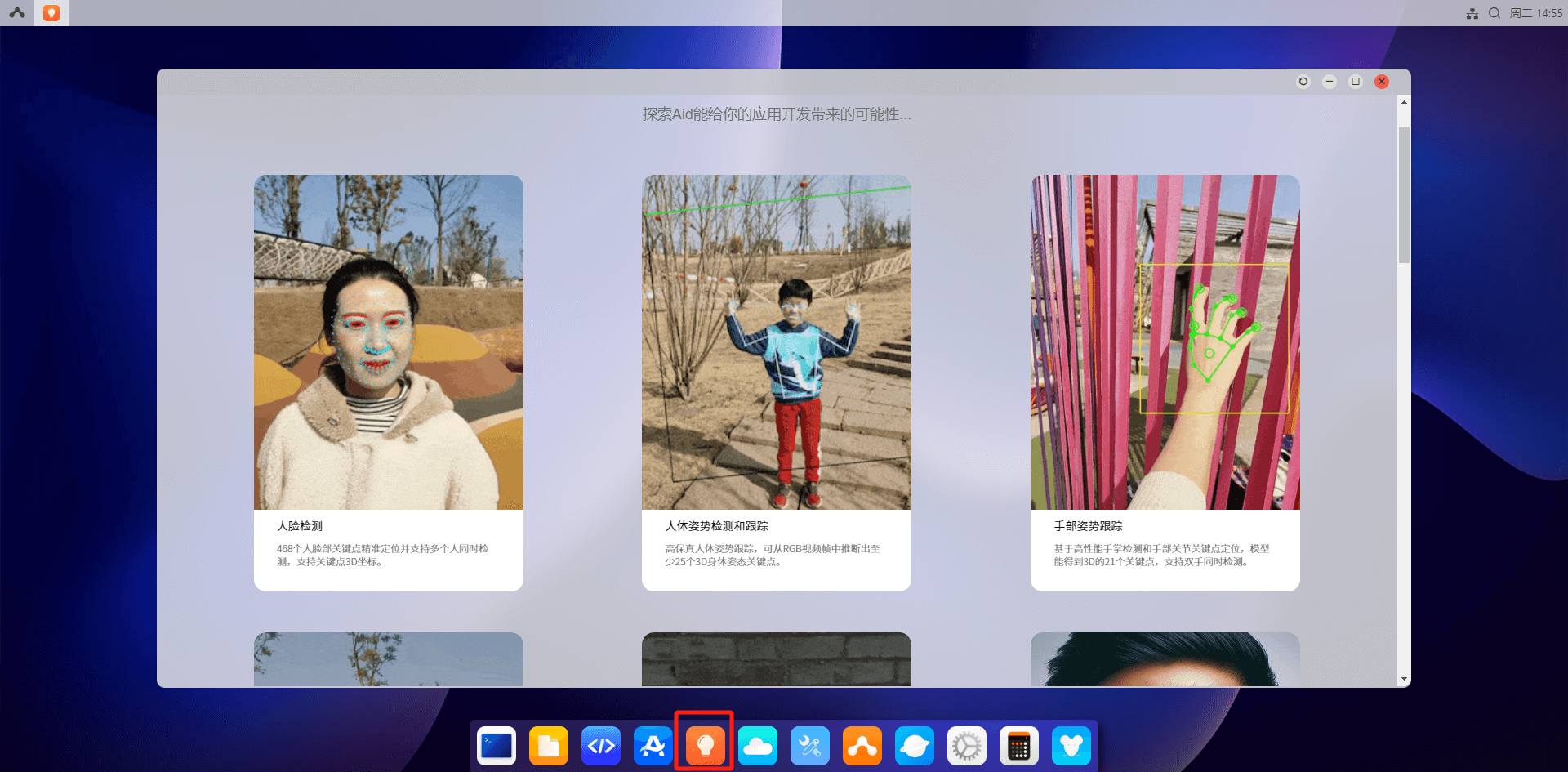
The application provides several AI application examples. Clicking an example allows you to view its source code in AidCode, and clicking "Run" lets you preview the model's effects.

App Center
- AidLux Apps
Open the App Center, select the desired application icon under the AidLux section, and click to install. The password for installing apps is aidlux.

Installed apps can be viewed in the Installed section. Select an installed app’s icon, and click the button to add it to the desktop. Click the icon to use it. (In the Installed section, you can also uninstall apps by clicking their icons.)
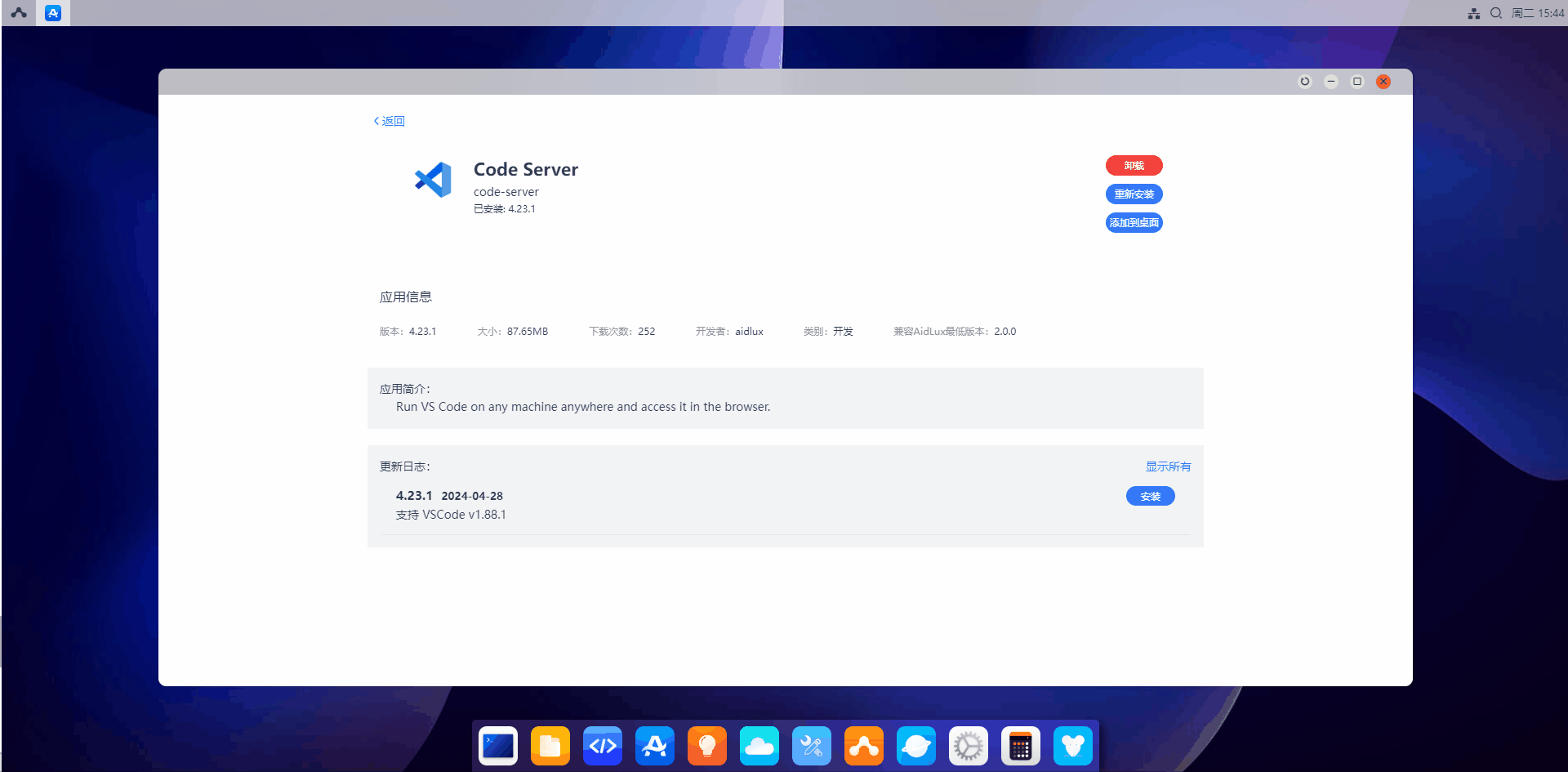
- Android Apps
Open the App Center, select the desired application icon under the Android section, and click to choose Add to Desktop. Note that the web remote desktop does not support viewing Android apps; use this feature on the Android device. Afterward, the installed app will appear on the AidLux desktop, and clicking its icon will launch it. In the Android Added section of the App Center, you can also remove apps from the desktop by clicking their icons.

AidCode
- Open the
AidCodeapplication icon on the desktop. The top section is the operation area, and the bottom is the code area.
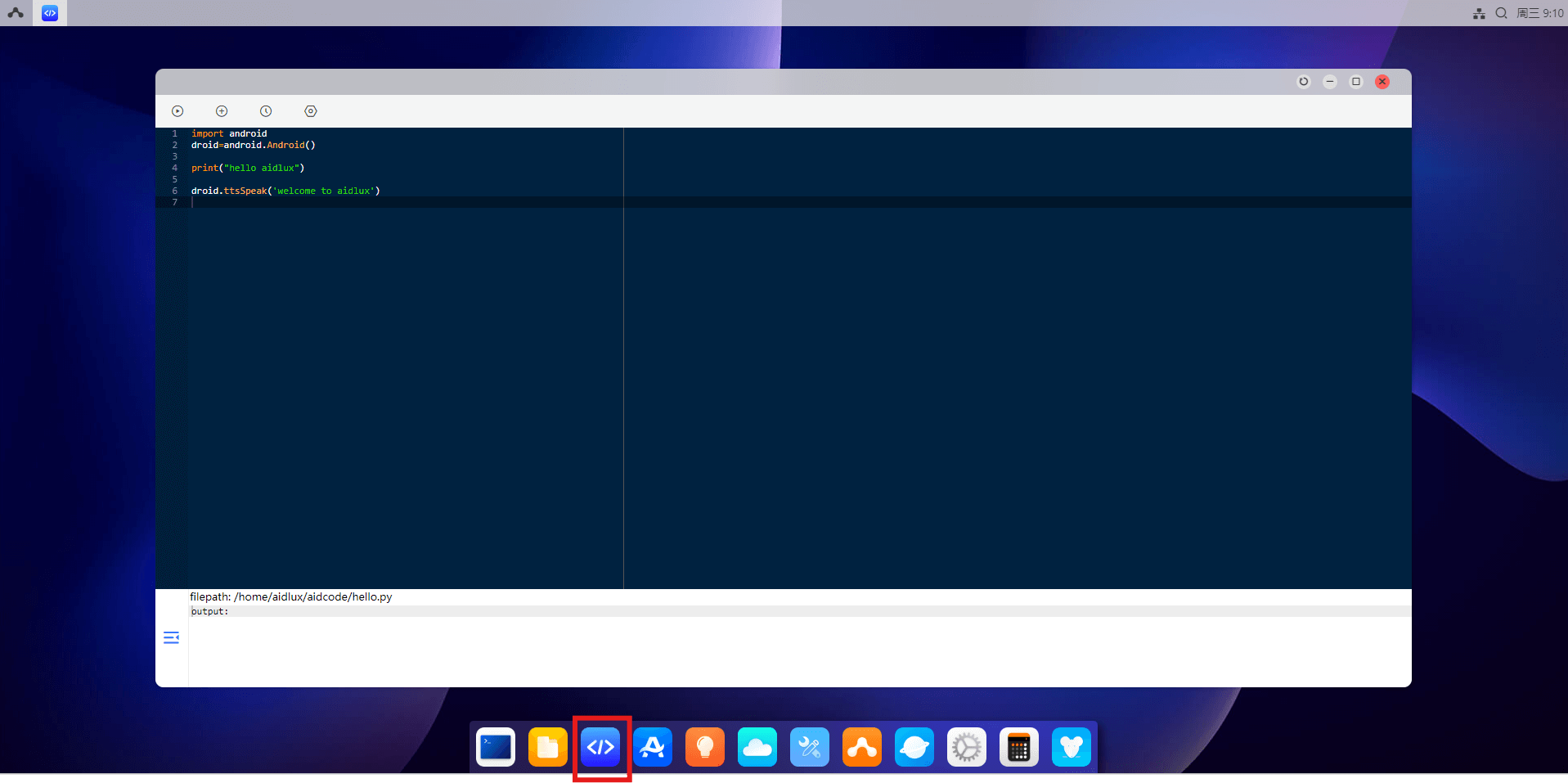
Clicking the first button at the top opens a secondary button menu:
Run Now: Run the current code.
Stop: Stop the running code.
Clicking the second button at the top opens a secondary button menu:
Open: Open a Python code file.
New: Create a new Python code file.
Save: Save the Python code file.
Clicking the third button at the top displays recently opened files.
Clicking the fourth button at the top allows you to set the code style and font size.
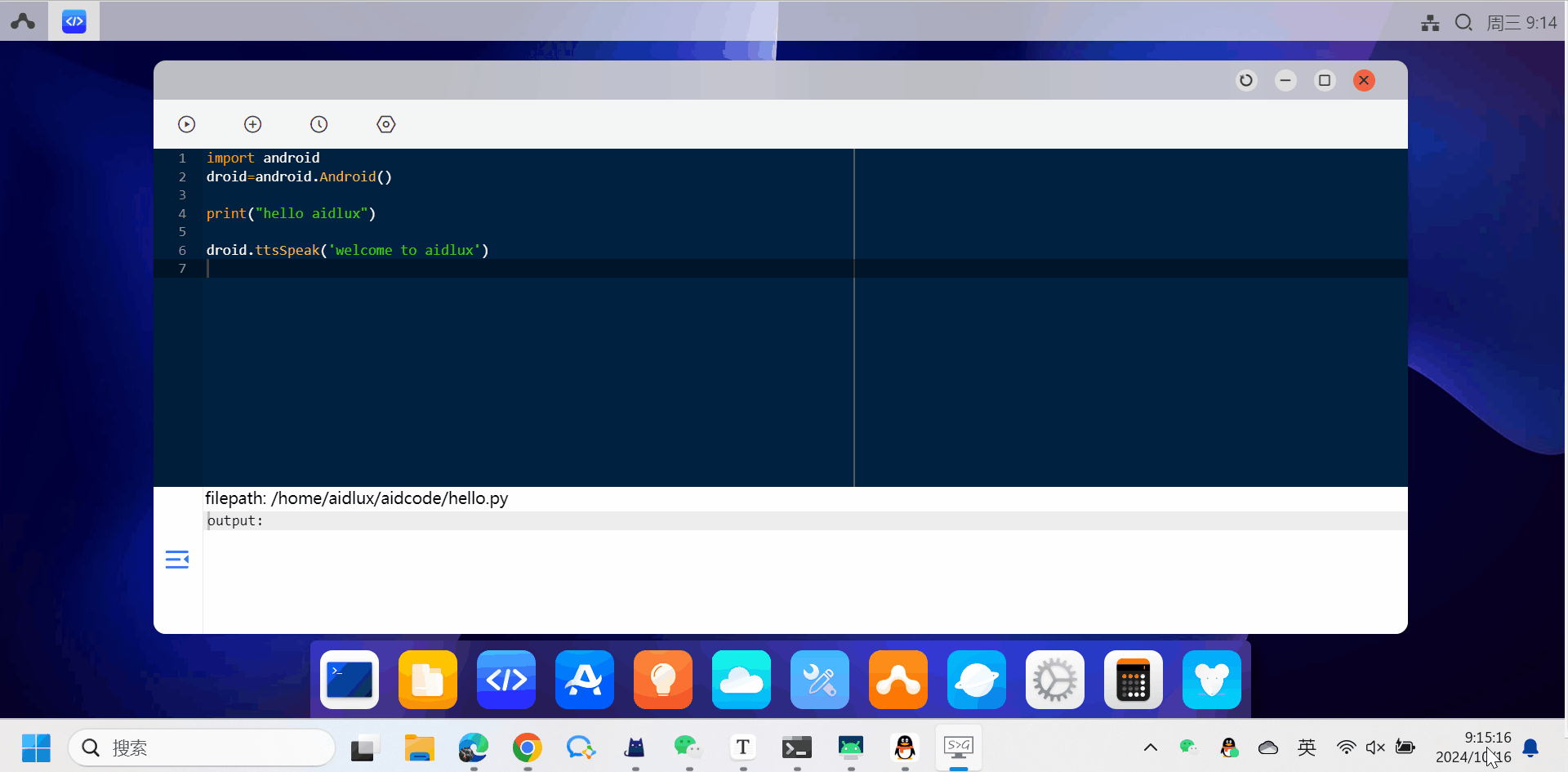
💡 Note
It is not recommended to use the Xunfei input method.
Settings
- Open the desktop
Settingsicon to change the wallpaper, modify the desktop style, adjust display settings, configure network settings, and modify system language settings in the "Other Settings" section.

💡 Note
Desktop resolution settings cannot be adjusted in the web desktop.
File Browser
Click the File Manager icon on the AidLux desktop to enter the file browser. The directory structure of AidLux is visible on the left:
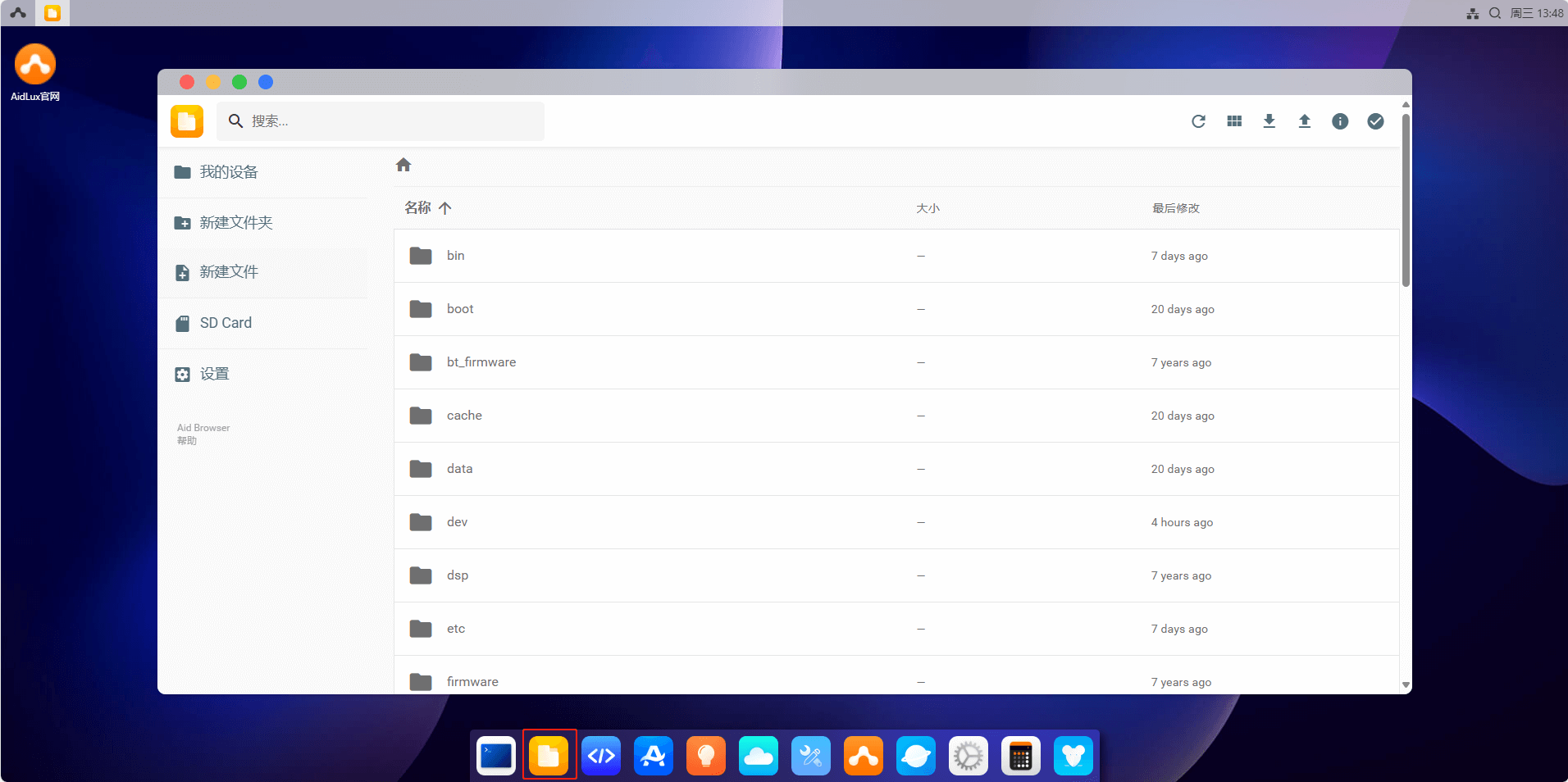
Select New Folder on the left, enter a name, and create a new folder:
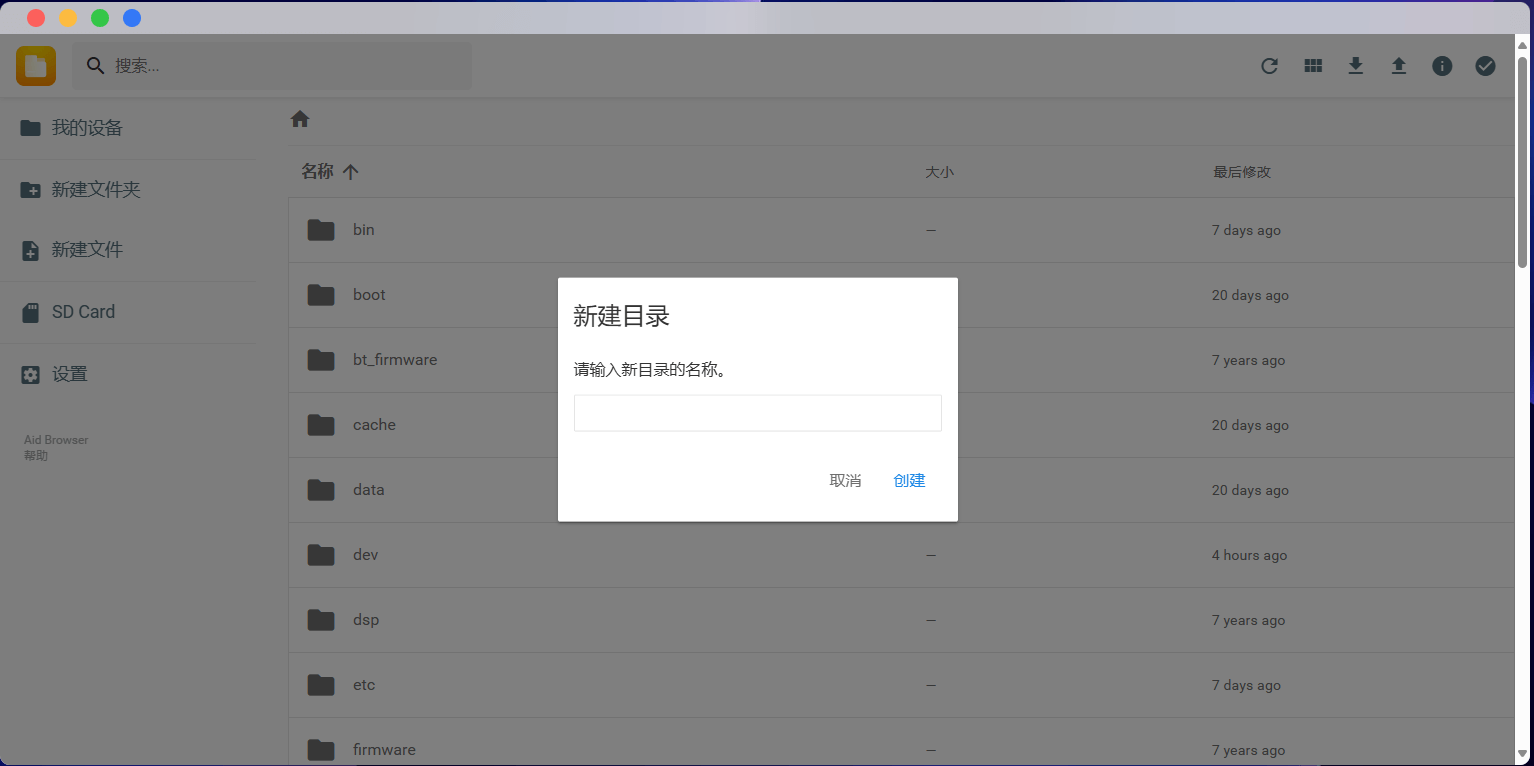
Select New File on the left, enter a file name, and create a new file:
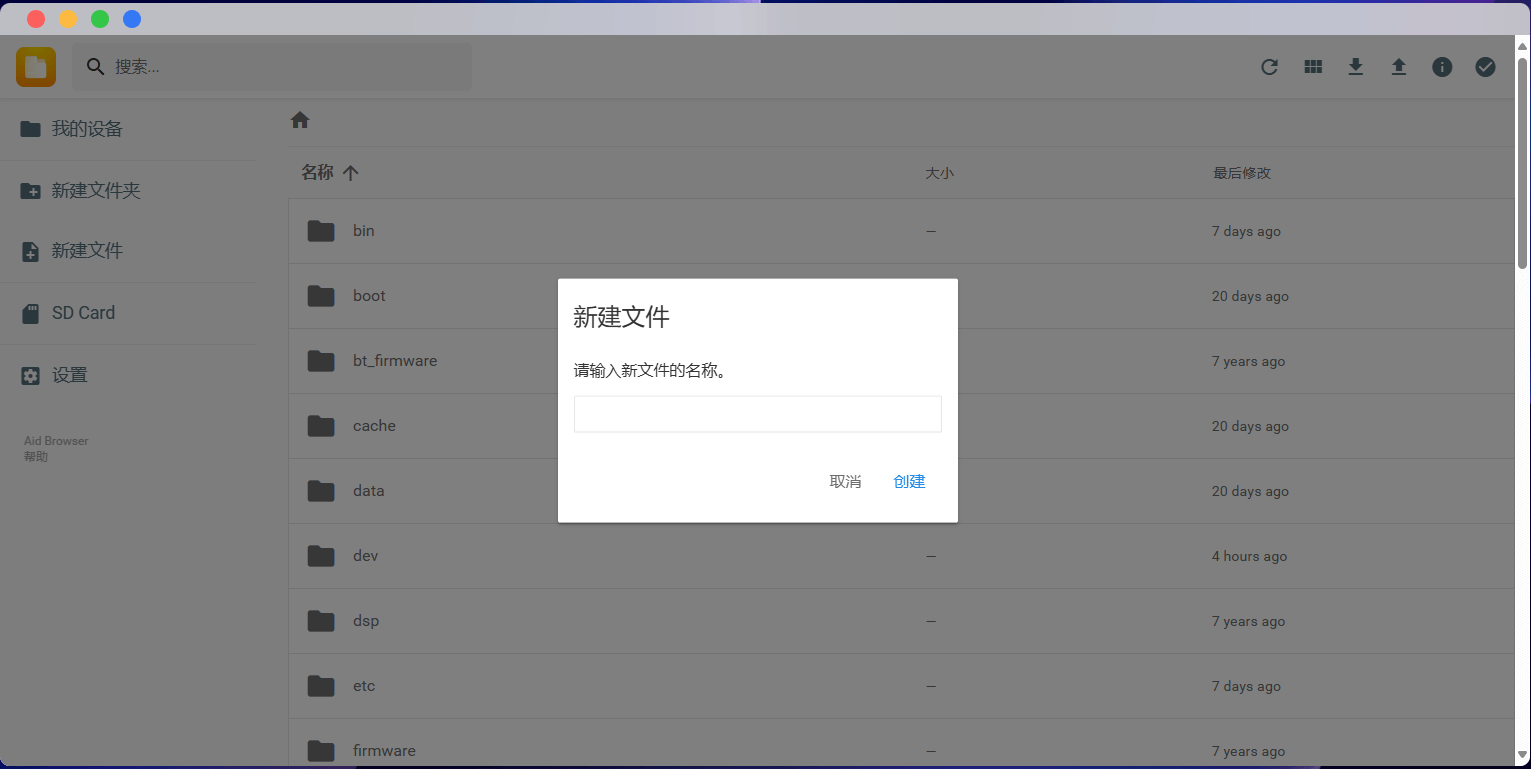
Select SD Card on the left to quickly navigate to the device storage directory:
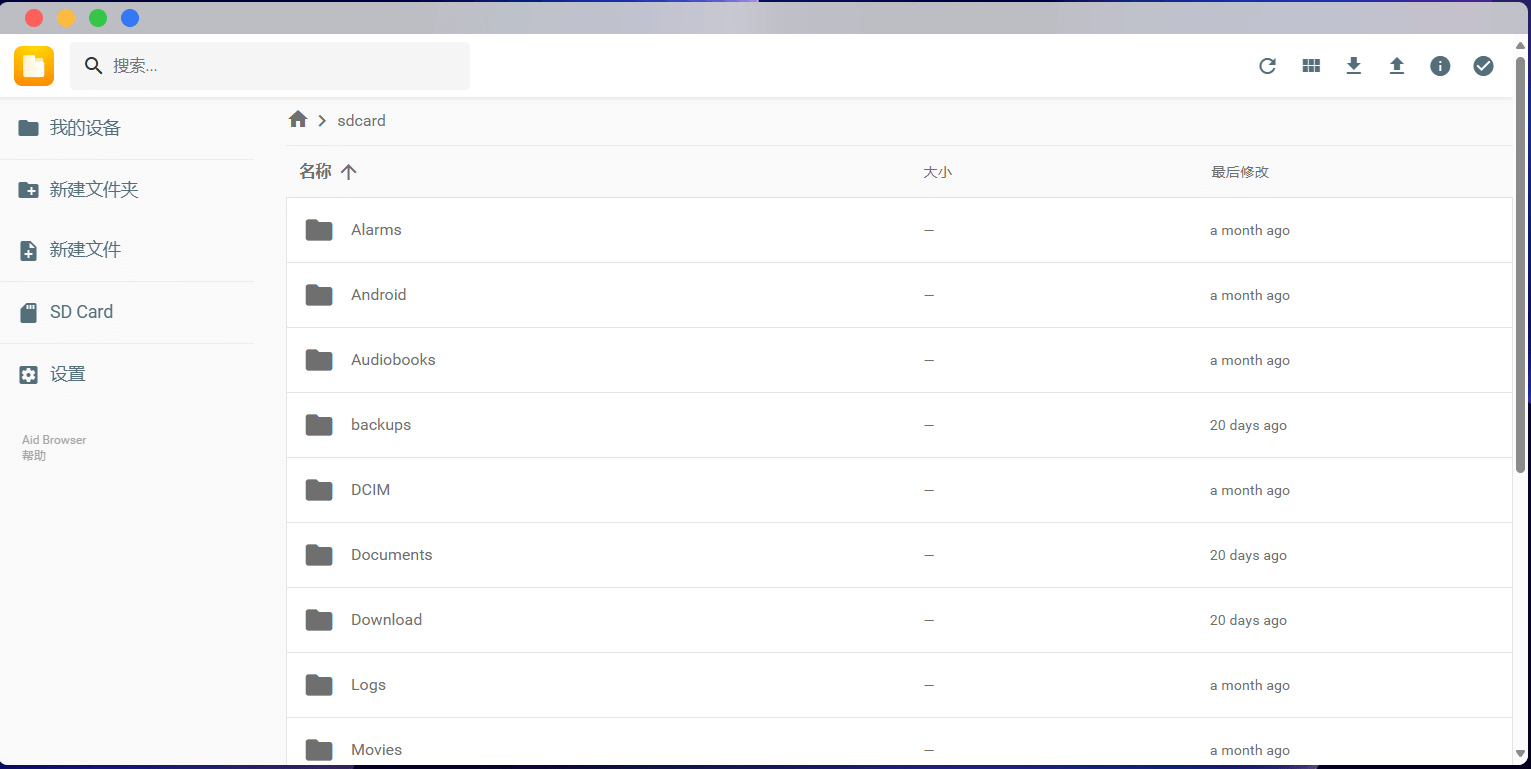
Select Settings on the left to access related settings:
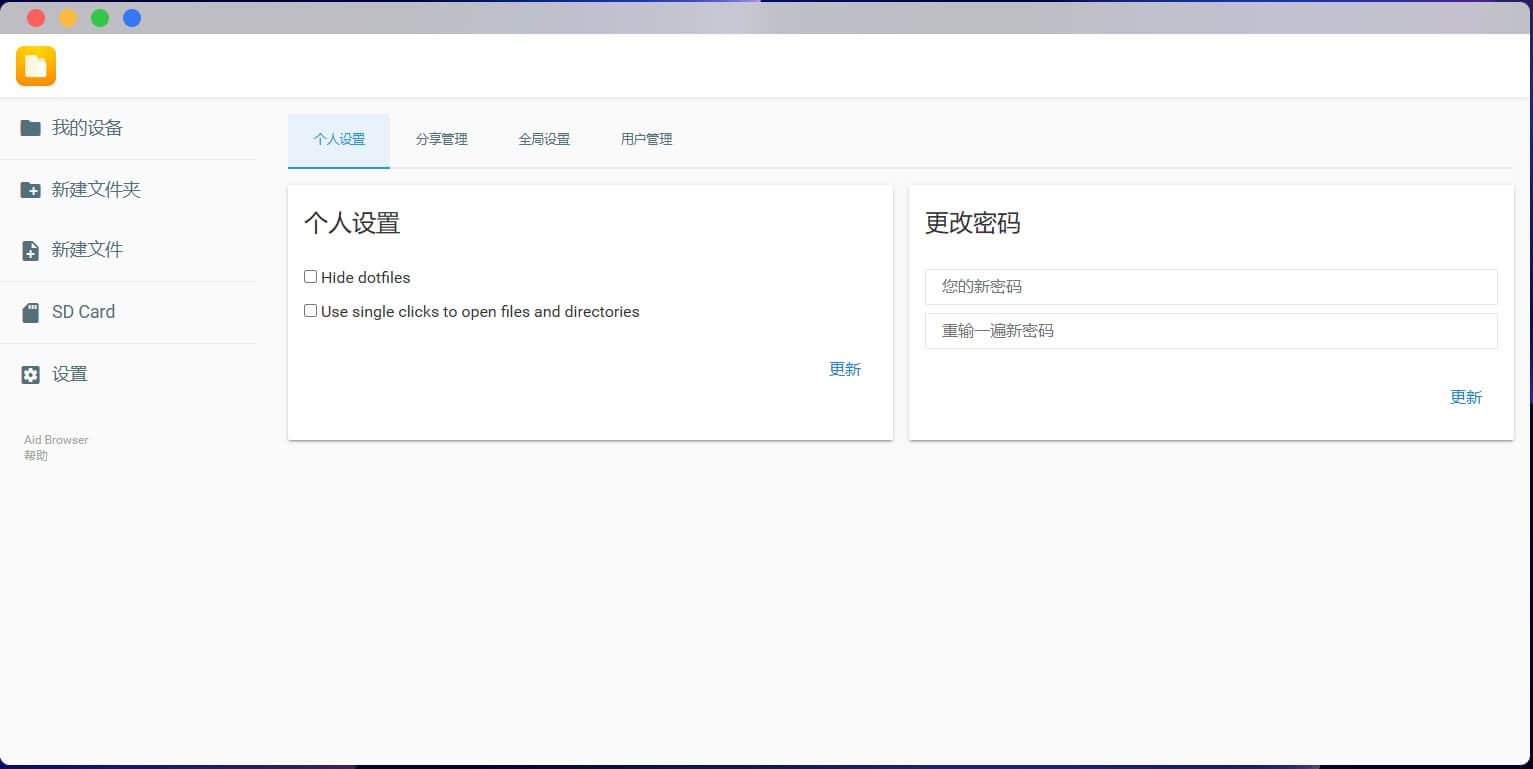
- Common Information:
The SD card directory for phones or ARM boards in AidLux is sdcard.
The Home directory contains examples.
The directory for an external USB drive is media/sdi1.
The sdcard directory for storing images is DCIM.
- Uploading and Downloading Files
To upload files, select code files or images from the computer, click the upload button in the top right corner of the file browser, or drag and drop files into the file browser. (For large files, a progress bar will appear at the top.) Click the download button in the top right corner of the file browser to download files from the mobile device to the computer.
💡 Note
Only the /home/AidLux directory has permission to accept file uploads.
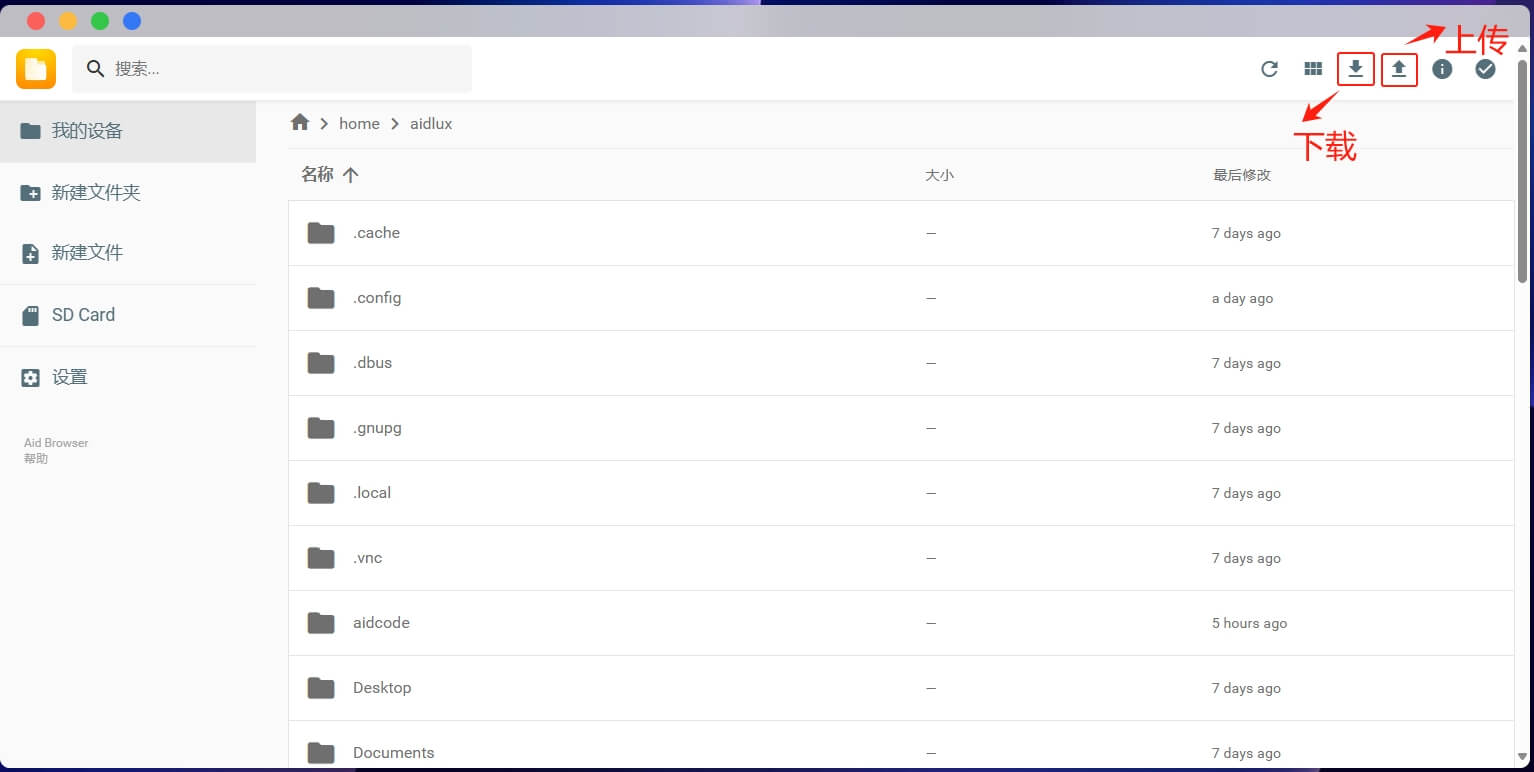
AidLinux Environment
AidLux provides a user experience nearly identical to a native Linux environment. For users who need to use a native Linux terminal, click the Command Line Mode icon on the AidLux desktop to enter terminal mode.
💡 Note
The web desktop does not support this feature.
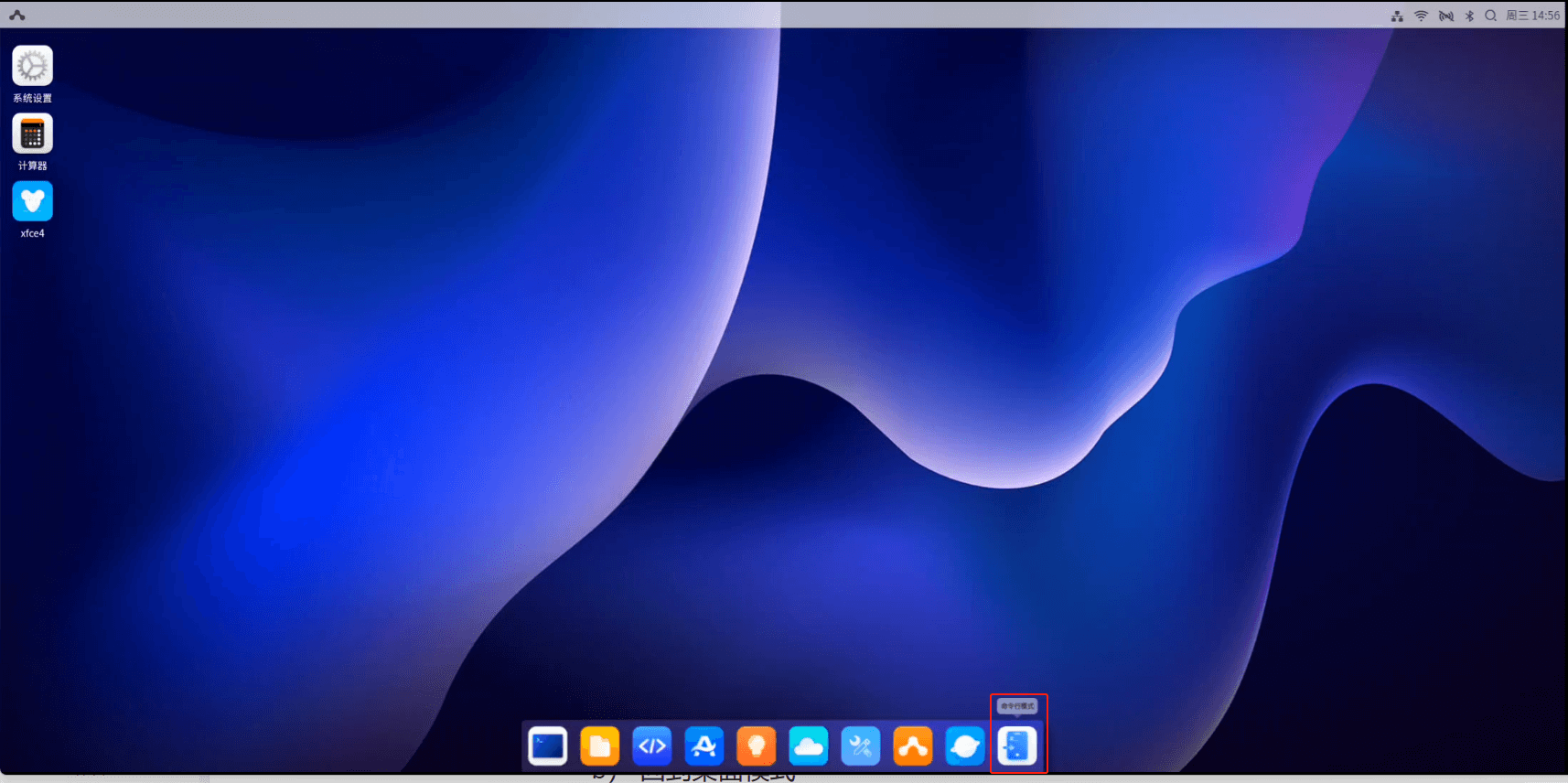
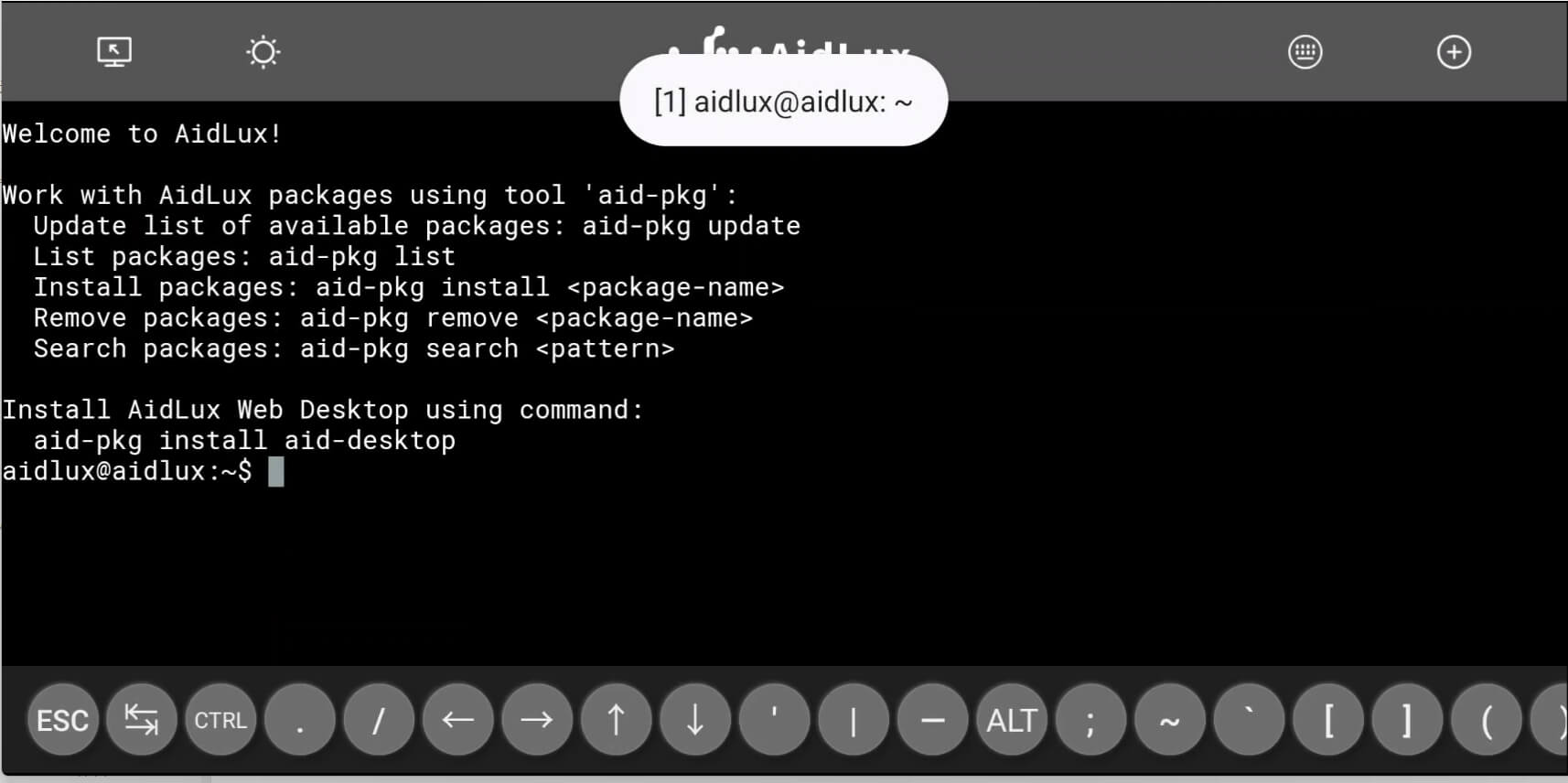
Return to Desktop Mode
To return to desktop mode, click the button in the top left corner of the AidLux terminal:
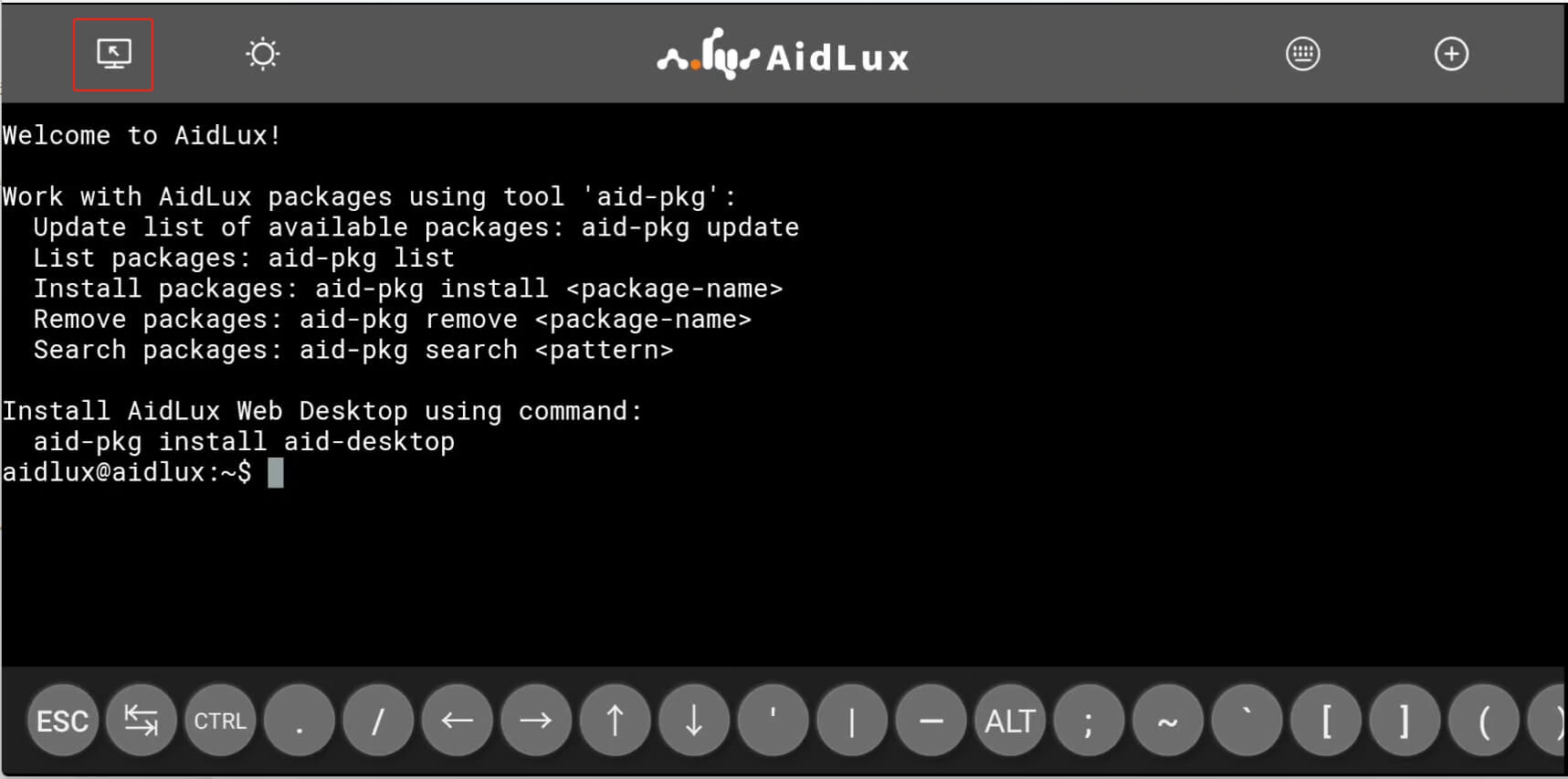
Touch Bar
The Touch Bar at the bottom of the terminal provides all commonly used function keys. Due to limited screen width, you may need to swipe horizontally to view the entire Touch Bar. Function keys like CTRL, ALT, etc., will remain pressed when activated to support combination key inputs.
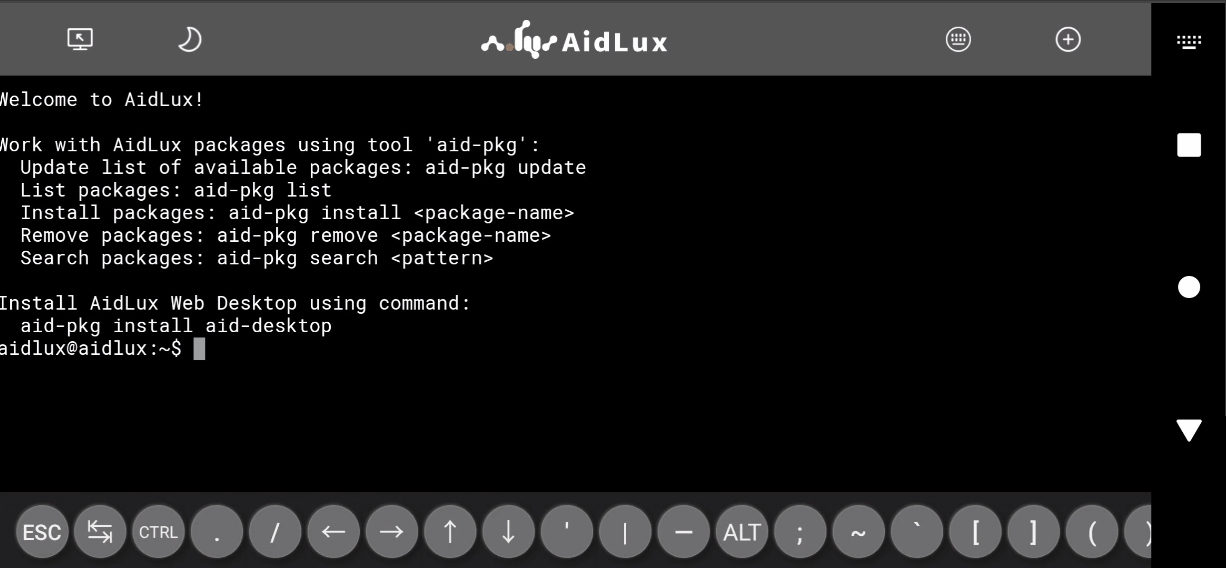
Switch Touch Bar Theme
Click the sun-shaped button in the top left corner of the terminal to switch between black and white themes for the Touch Bar:
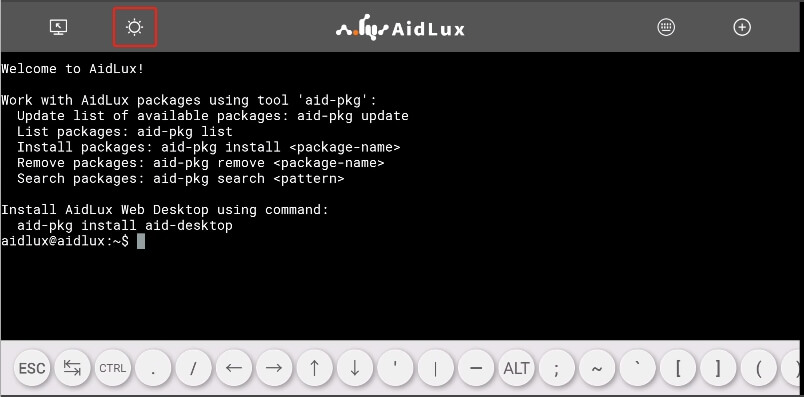
Click again to switch the Touch Bar to the black theme:
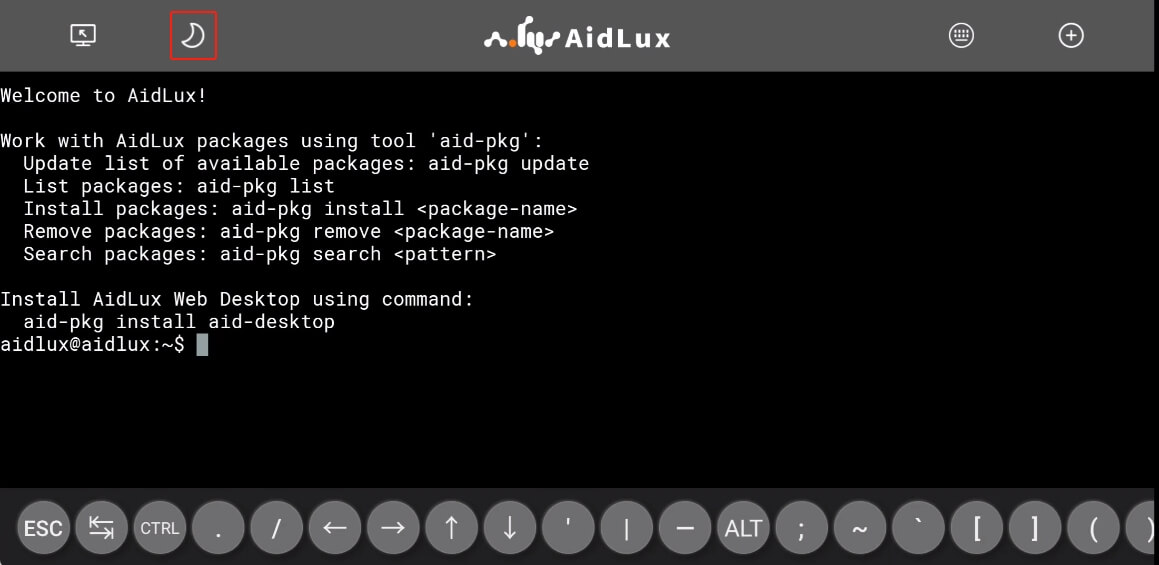
Keyboard
Clicking on a blank area in the terminal brings up the system keyboard:
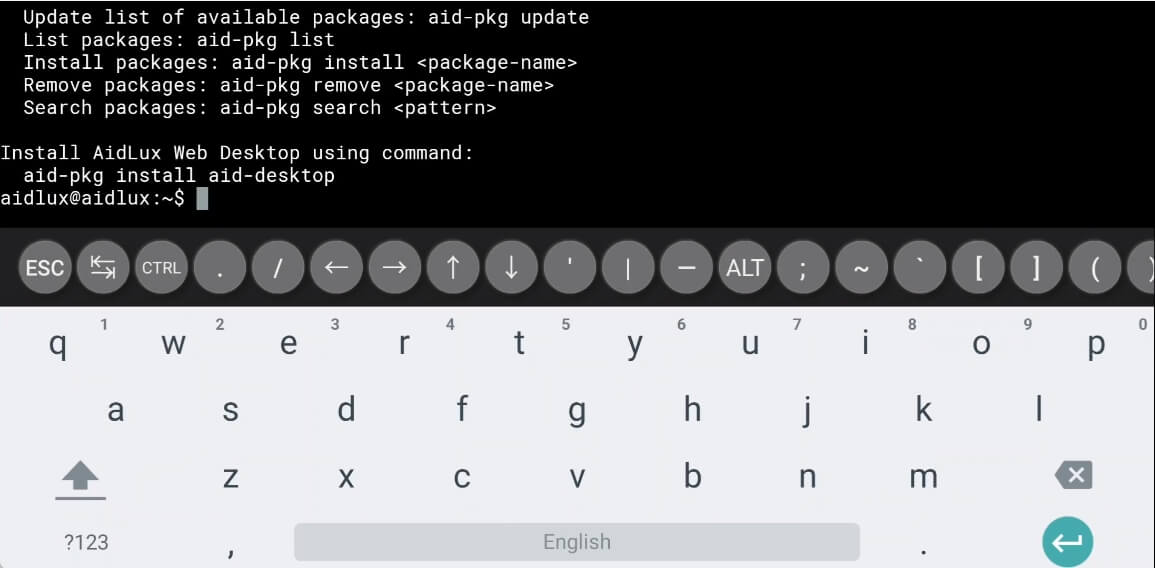
Click the keyboard-shaped button in the top right corner of the terminal to toggle the hide/lock state of the system keyboard. After toggling, a lock icon will appear in the top right corner of the button:
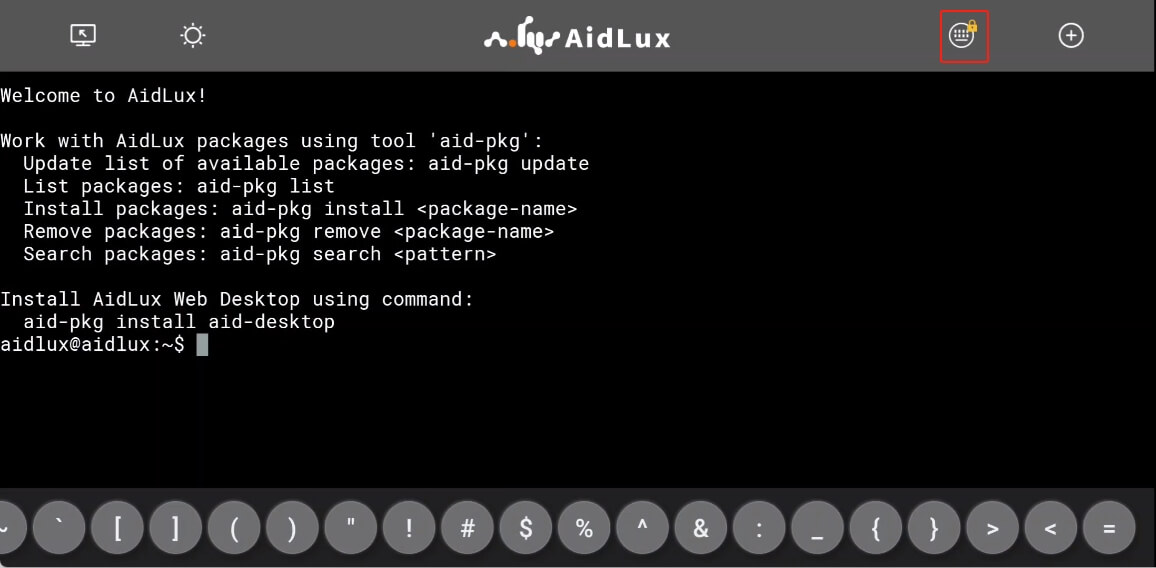
Multiple Terminals
When running multiple foreground tasks, a single terminal may not suffice. You can create additional terminals by clicking the plus button in the top right corner of the terminal. You can also switch between multiple terminals here. To close a terminal, click the plus button and then the close button next to the terminal’s number.
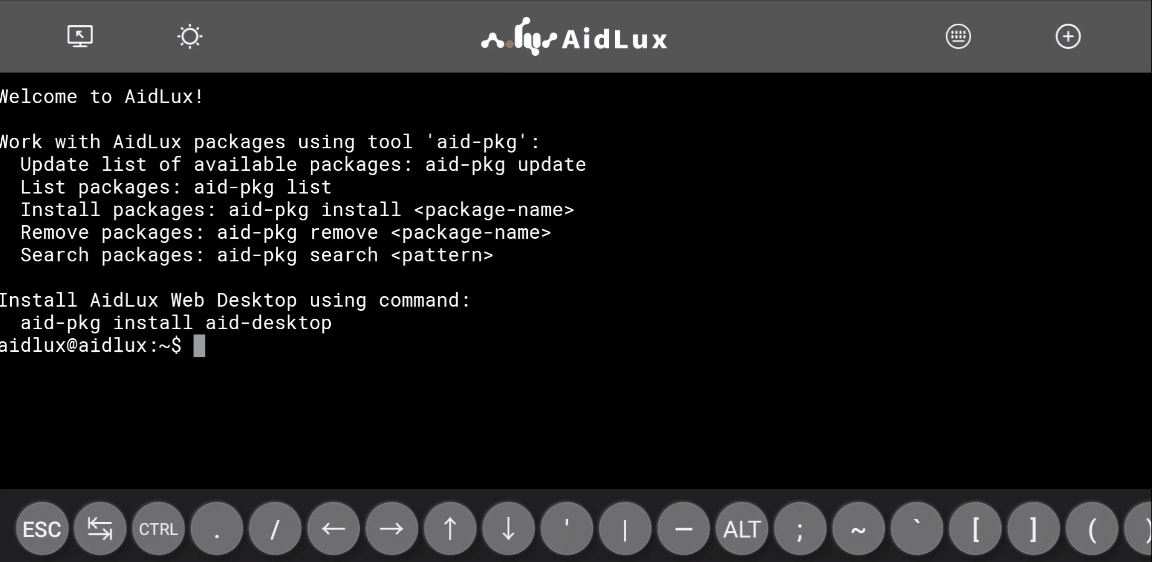
Switching Between Android and AidLux Desktop Environments
In the settings, check whether AidLux is set as the default home screen application. (Enable this setting if you want AidLux to start automatically on boot; otherwise, disable it.) After disabling, you can flexibly switch between the Android and AidLux desktop environments, as shown below:

Configuring Auto-Start Services on Boot
Open the terminal and view the /etc/rc.local configuration file. Add the service programs you want to run automatically on boot to the rc.local file, as shown below, to complete the configuration:
cd /home/aidlux/openai_service_aidlux
sudo -u aidlux python3 run.py